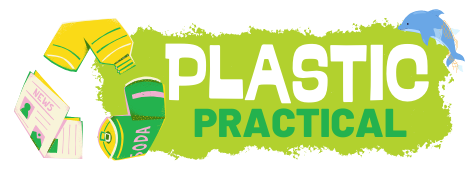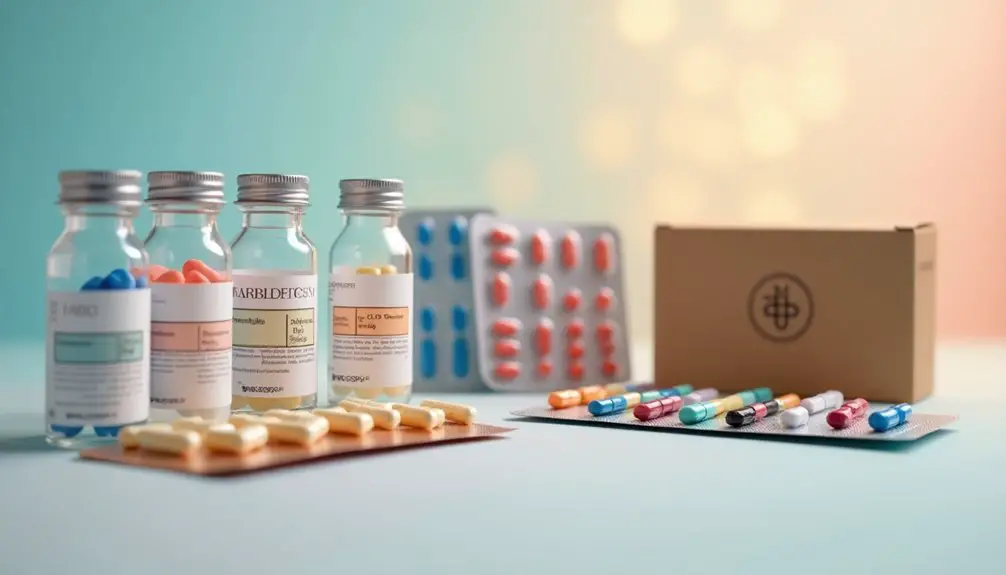When considering packaging for pharmaceutical products, you need to prioritize medication protection and regulatory compliance. Effective packaging safeguards drugs from physical damage, moisture, and light, ensuring their safety over time. Make sure to include essential information like dosage instructions and safety warnings. Consider different types of packaging, such as blister packs for tablets and vials for injectables, each offering unique benefits. Don't overlook sustainability—opting for recyclable materials not only helps the environment but can enhance your brand. Discover the intricacies of these key elements and how they shape the pharmaceutical landscape as you explore further.
Key Takeaways
- Pharmaceutical packaging must protect medications from physical damage, moisture, light, and temperature fluctuations to ensure safety and efficacy.
- Regulatory compliance is crucial, incorporating guidelines from MHRA and FDA to maintain safety features like child resistance and tamper evidence.
- Primary packaging types, such as blister packs and vials, provide essential protection and sterility, ensuring the integrity of medications.
- Effective packaging design prevents leachables and extractables that could compromise drug stability, particularly for sensitive biologic products.
- Sustainable packaging options, including recyclable materials and reduced weight, are increasingly important for minimizing environmental impact in the pharmaceutical industry.
Importance of Pharmaceutical Packaging
Pharmaceutical packaging is more than just a container; it's the guardian of your medication's safety and effectiveness. When pharmaceutical products are packaged, they undergo rigorous processes to protect them from physical damage, moisture, light, and temperature fluctuations. This protection is crucial for ensuring the safety and maintaining the integrity of the medications throughout their shelf life.
Effective packaging not only safeguards the drugs but also communicates essential information to you. It provides dosage instructions, ingredient lists, and safety warnings, which are vital for correct usage and adherence to your medication regimen. Without proper labeling and information, the risk of misuse increases.
Regulatory compliance is paramount in pharmaceutical packaging. Agencies like the FDA and EMA set strict guidelines to ensure the materials used are safe, sterile, and properly labeled.
This adherence to regulations underscores the importance of quality control throughout the packaging process, helping to maintain the therapeutic efficacy of the products.
Key Regulatory Compliance Factors
When it comes to packaging drugs, understanding key regulatory compliance factors is vital for ensuring that medications are safe and effective. In the UK, the Medicines and Healthcare products Regulatory Agency (MHRA) sets strict guidelines that cover everything from labeling to safety protocols. You must ensure that your packaging materials meet these regulatory standards to maintain quality and consumer trust.
Compliance information is essential, as it reassures both patients and healthcare professionals about the safety and efficacy of the medications. Packaging must include features like child safety, tamper evidence, and sterility, as required by agencies like the FDA.
Regular audits and updates to your packaging processes are necessary to stay aligned with evolving regulations. This diligence safeguards the integrity of your primary packaging throughout the product lifecycle.
Types of Pharmaceutical Packaging
Choosing the right type of packaging is crucial for maintaining the integrity and safety of medications. Understanding the types of pharmaceutical packaging available can help you make informed decisions that align with product quality and regulatory requirements. The use of biodegradable materials in packaging can also contribute to reducing plastic waste and lowering carbon footprints in the pharmaceutical industry.
| Type of Packaging | Description | Common Use Cases |
|---|---|---|
| Primary Packaging | First layer of protection for drugs | Blister packs, bottles, ampoules |
| Blister Packs | Tamper-evident and child-resistant | Tablets and capsules |
| Parenteral Packaging | Maintains sterility for injectable products | Vials, syringes, ampoules |
| Bottles | Versatile for liquids and solids | Oral medications, solutions |
| Secondary Packaging | Provides extra protection and branding | Cartons, boxes |
Primary packaging, like blister packs and bottles, is essential for preserving drug integrity. Blister packaging not only protects each dose but also offers tamper-evidence, making it a popular choice for tablets. Parenteral packaging is designed specifically for injectable products, ensuring sterility and accurate dosing. Lastly, secondary packaging enhances organization and branding while safeguarding the primary containers. When you choose the right packaging, you help ensure compliance and maintain high standards for pharmaceutical products.
Ensuring Sterility and Stability
Maintaining the integrity of drug products goes beyond selecting the right packaging; it also involves ensuring sterility and stability throughout their shelf life. For injectable products, sterility testing is essential to confirm that the packaging doesn't compromise safety or efficacy. Regulatory standards mandate that pharmaceutical packaging must uphold both sterility and stability, ensuring products remain effective for their intended duration.
The integrity of packaging materials plays a crucial role in this process. They must protect against moisture, light, and temperature fluctuations that could degrade the drug. Effective packaging solutions are designed to prevent leachables or extractables that could negatively impact the stability of sensitive biologics.
To maintain stability, especially for biologics, it's vital to preserve a proper cold chain. This often requires storage at temperatures between -50 to -80°C. Utilizing robust packaging designs helps ensure that these temperature requirements are met, safeguarding the product's efficacy.
Sustainability in Drug Packaging
In recent years, the pharmaceutical industry has made significant strides toward sustainability in drug packaging. You'll find that many companies are now prioritizing sustainable packaging by using recyclable materials, incorporating up to 30% recycled content in their cartons.
This shift not only helps reduce environmental impact but also aligns with consumer demand for eco-friendly solutions.
Innovations in packaging options have emerged, such as edible and water-soluble materials, which aim to minimize waste further. The industry is increasingly adopting fiber-based packaging alternatives to replace traditional plastics, ensuring regulatory compliance while enhancing sustainability.
Moreover, optimizing packaging size and weight is becoming a common practice, reducing waste generation and lowering transportation emissions by up to 20%.
Implementing energy-efficient packaging processes not only contributes to a lower carbon footprint but also supports the overall move toward more sustainable practices in pharmaceutical products.
The use of recyclable materials, such as PET plastic, can significantly reduce waste and support a more circular economy in the pharmaceutical industry.
Frequently Asked Questions
What Are the Ideal Requirements of Pharmaceutical Packaging?
When considering pharmaceutical packaging, you need protection from damage and environmental factors. It must comply with regulations, communicate clearly, prevent tampering, and ensure safety. The materials should also maintain the drug's integrity throughout its shelf life.
What Are the FDA Requirements for Pharmaceutical Packaging?
The FDA requires pharmaceutical packaging to ensure safety and efficacy, include essential labeling, use non-reactive materials, provide child-resistant features, and undergo stability testing. Compliance with these regulations is crucial for maintaining drug integrity and patient safety.
What Are the Standards of Pharmaceutical Packaging?
You need to ensure your pharmaceutical packaging meets strict standards for safety, efficacy, and quality. This includes selecting protective materials, following labeling guidelines, and implementing child-resistant features to prevent accidental ingestion and contamination.
What Should Packaging on Drugs Include?
When it comes to drug packaging, you'll want clear labels with dosage instructions, active ingredients, and side effects. Make sure it's child-resistant, includes storage info, and features barcodes for easy tracking and management.

